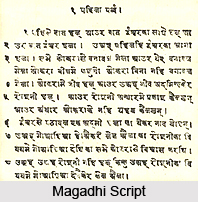 Magadhi is a popular language with a huge population of 17,449,446 in the provinces of Indian subcontinent. It has rich heritage link. It is a primitive form of Magadhi , also acclaimed as Magadhi Prakrit, supposed to be the language widely spoken by Gautama Buddha.
Magadhi is a popular language with a huge population of 17,449,446 in the provinces of Indian subcontinent. It has rich heritage link. It is a primitive form of Magadhi , also acclaimed as Magadhi Prakrit, supposed to be the language widely spoken by Gautama Buddha.
The ancient Indian rules of Magadha kingdom popularized this Magadhi language amongst its subjects. Speakers also can identify Magadhi as Magahi , Magaya, Maghai, Maghaya, Maghori, Magi, Magodhi, Bihari, Megahi . Primarily it was thought to a dialect of Hindi but it was merely a mistaken notion. Magadhi has a close relation to other two regional languages like Maithili and Bhojpuri. Some scholars claim that all these three languages of India form an individual cluster with the name Bihari language group. This Bihari language group again constitutes a sub group of the famous Indo Aryan language. In fact it belongs to the Eastern zone group of the family.
In Indian subcontinent Magadhi has around thirteen million speakers. It is spoken principally in the Magadh region of Bihar state. This locale comprises of Jehanabad, Patna, Gaya, Aurangabad, Nalanda, and other adjacent districts. Even in several provinces of West Bengal and Bihar, there are quite handfuls who speak Magadhi quite fluently. Bihar districts are namely, Hazaribagh, Giridih, Palamau, Munger, Bhagalpur while the people of Malda District and its nearby region of West Bengal speak the language. In three districts of Jharkhand also , Magadhi language is prevalent. The famous Devanagari script is used for writing Magadhi language.
It has a very rich and old tradition of folk songs and stories. In some places it is also popular as a pious language.



















